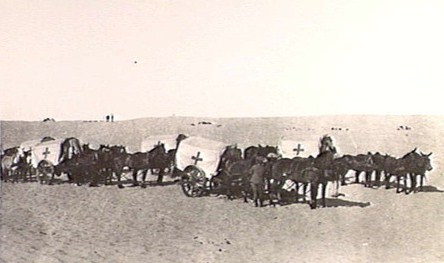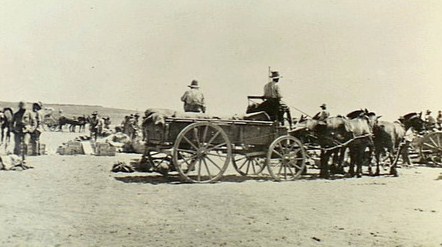Transport in the Palestine Campaign






Ambulances Sinai 1916
With the difficulties of movement by wheeled transport in the desert, ambulances were restricted to short hauls in close support in the battlefield until the better terrain of Palestine was reached.
Bad as the horsed wagons were for injured and sick men, the inescapable alternative of the cacolet on the back of a camel was far worse.
Australian War Memorial P00019.006, J02884
Rail terminal
El Arish 1917
Until the front moved to the Plain of Philistia, when Diran became the forward base, El Arish supported the Gaza battles of 1916 and 1917.
Australian War Memorial H02830
Camels at Railhead
Philistia 1918
Camels loaded with frozen mutton prepare to move forward to the Anzac and Australian Mounted divisional trains..
Australian War Memorial B01433
Delivering rations
Palestine 1917
The ultimate test in any system is the successsful outcome – here delivering rations to a unit in good time.
Australian War Memorial P02400.017
Wagon in the Jordan Valley
Jericho summer 1918
Temperatures continuously above 40oC in the shade plus parasites, cerebral malaria, dust and overwork levied high casualties on men, animals and equipment.
These losses to illness simply meant that the remaining men and mules had to carry the same workload. A system was developed of spelling each company after three days, with camel transport covering the fourth day.
Australian War Memorial 800230
Transport in the Palestine Campaign





